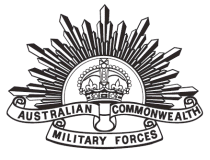
| Regimental number | 605 |
| Place of birth | Sydney New South Wales |
| Other Names | Harold Louis |
| Religion | Roman Catholic |
| Occupation | Station hand |
| Address | 18 Denison Road, Newtown, Sydney, New South Wales |
| Marital status | Single |
| Age at embarkation | 22 |
| Next of kin | Mother, Mrs Baker, 18 Denison Road, Newtown, Sydney, New South Wales |
| Enlistment date | |
| Date of enlistment from Nominal Roll | |
| Rank on enlistment | Private |
| Unit name | 1st Light Horse Regiment, 1st Reinforcement |
| AWM Embarkation Roll number | 10/6/2 |
| Embarkation details | Unit embarked from Sydney, New South Wales, on board HMAT A42 Boorara on |
| Rank from Nominal Roll | Private |
| Unit from Nominal Roll | 1st Light Horse Regiment |
| Other details from Roll of Honour Circular | Enlisted 5 September 1914 - 1st Light Horse, 1st Reinforcements. Taken on strength, 1st Light Horse, 15 February 1915. Mortally wounded, 18 May 1915. |
| Fate | Died of wounds |
| Place of death or wounding | Gallipoli, Turkey |
| Date of death | |
| Place of burial | No known grave |
| Commemoration details | The Lone Pine Memorial (Panel 1), Gallipoli, Turkey The Lone Pine Memorial, situated in the Lone Pine Cemetery at Anzac, is the main Australian Memorial on Gallipoli, and one of four memorials to men of the New Zealand Expeditionary Force. Designed by Sir John Burnet, the principal architect of the Gallipoli cemeteries, it is a thick tapering pylon 14.3 metres high on a square base 12.98 metres wide. It is constructed from limestone mined at Ilgardere in Turkey. The Memorial commemorates the 3268 Australians and 456 New Zealanders who have no known grave and the 960 Australians and 252 New Zealanders who were buried at sea after evacuation through wounds or disease. The names of New Zealanders commemorated are inscribed on stone panels mounted on the south and north sides of the pylon, while those of the Australians are listed on a long wall of panels in front of the pylon and to either side. Names are arranged by unit and rank. The Memorial stands over the centre of the Turkish trenches and tunnels which were the scene of heavy fighting during the August offensive. Most cemeteries on Gallipoli contain relatively few marked graves, and the majority of Australians killed on Gallipoli are commemorated here. |
| Panel number, Roll of Honour, Australian War Memorial | 2 |
| Other details |
War service: Egypt, Gallipoli Medals: 1914-15 Star, British War Medal, Victory Medal |